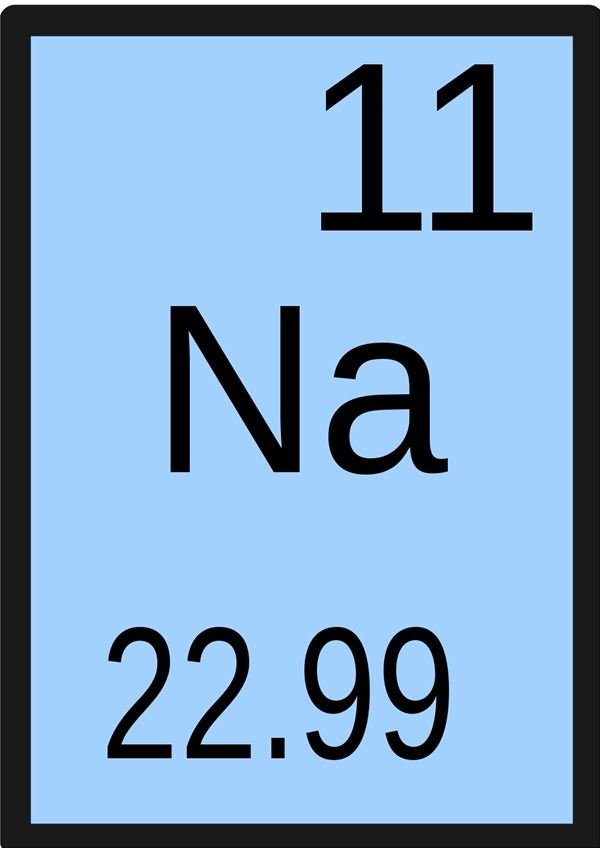
It is the starting material for the production of NaOH, Na 2CO 3, Na 2SO 4, etc. The use of sodium chloride in the industry is simply numerous.Therefore, sodium is the most favorable material for heat exchange in the fast breeder nuclear power reactor. The metal has a low melting point, low viscosity, and low neutron absorption cross-section with high heat capacity and thermal conductivity.These are used for the production of artificial rubber. Dispersion of sodium in various media like carbon and potassium carbonate is used as a chemical catalyst in various reactions of alkenes.A considerable amount of metal is consumed in the production of various types of sodium compounds like hydroxide (NaOH), peroxide (Na 2O 2), hydride (NaH), organosodium compounds, etc.It is used as a reducing agent in the extraction of titanium and zirconium.The production and manufacture of lead tetraethyl are likely to be decreased due to environmental pollution or lead posing. More than half of the sodium produced every year is used for the production of Na/Pb alloy in the manufacture of lead tetraethyl (an antiknock compound).All the alkali metal halides are colorless, water-soluble crystalline solids formed by the reaction of MOH or M 2CO 3 with appropriate HX. It reacts directly react with hydrogen when heated to form an ionic hydride containing H − ion.
NAME OF NA ELEMENT SERIES
It forms a series of crystalline solid salts with different types of anions that are soluble in water. Sodium reacts with carbon to form acetylides Na 2C 2. It burns with air or oxygen to give Na 2O 2. The reactivity of alkali metals towards water increases from lithium to cesium.Īt 25 ☌ water reacts with lithium slowly, sodium reacts vigorously, potassium reacts with flame, and rubidium and cesium react with the explosion. Hence major chemistry of the element is dominated by ionic bonding. The first ionization energy of metal is more than compensated lattice energy suggesting that most of the compounds are formed by ionic bonding.
/GettyImages-604346724-589a56263df78caebc80b0c5.jpg)
They are normally adopting a body-centered cubic crystal structure but at low temperature, lithium forms a hexagonal closed-packed arrangement.All the alkali metals like lithium, sodium, potassium, and rubidium are soft, low melting, silvery-white, metals but cesium is a golden yellow colour.Chlorine liberated by this production process at the central graphite electrode (anode) is collected through the nickel dome. It is preferentially deposited with 1 to 2 percent of calcium metal in a cylindrical steel cathode. Under such conditions, the discharge potential of the Na + ion is lower than that of the Ca +2 ion. Therefore, the difficulties from the volatility of Na (boiling point 883 ☌) are largely eliminated. The temperature for electrolysis is considerably lower than the melting point of pure sodium chloride (803 ☌). Sodium is made by the electrolysis of a fused mixture of NaCl and CaCl 2. Na + ion constitutes about 0.3 percent of human blood, 0.6 percent of bone, and 0.6 to 1.5 percent of body muscles.

Plants and animal organism contains sodium compounds mainly NaCl. Besides the rock salts, natural brines and oceanic waters contain large amounts of sodium chloride. Similar deposits are found in Saskatchewan, Canada, and Carlsbad, New Mexico. The Cheshire salt field in the United Kingdom occupies areas of (60 km × 24 km) and a nearly 400-meter thick layer. The vast deposit of rock salt may be obtained by the evaporation of ancient seas. It has occurred in many minerals like rock salt (NaCl), carbonate (trona), nitrate (saltpeter), borate ( borax), etc. It has found 22,700 ppm in the earth’s crust. Sodium is the seventh most abundant periodic table element and the fifth most abundant metal after aluminum, iron, calcium, and magnesium. Some physical and chemical properties like melting point, boiling point, common oxidation number or state, and density are given below the table. The physical and chemical properties of the element are readily understood in terms of its simple outer electronic configuration. Due to the presence of 3s 1 outer electronic configuration, the alkali metal sodium occupies Group-1 or 1A on the periodic table. ** Except for helium, which has only two valence electrons.The electronic configuration of the alkali metal sodium is 1s 2 2s 2 2p 6 3s 1. * The general method for counting valence electrons is generally not useful for transition metals.


 0 kommentar(er)
0 kommentar(er)
